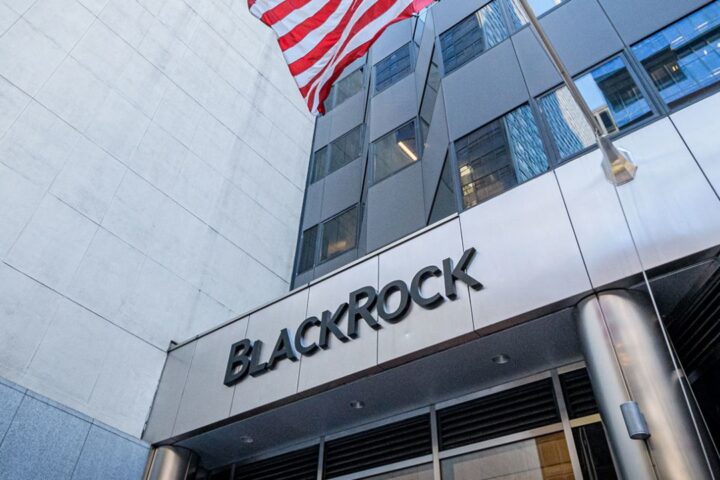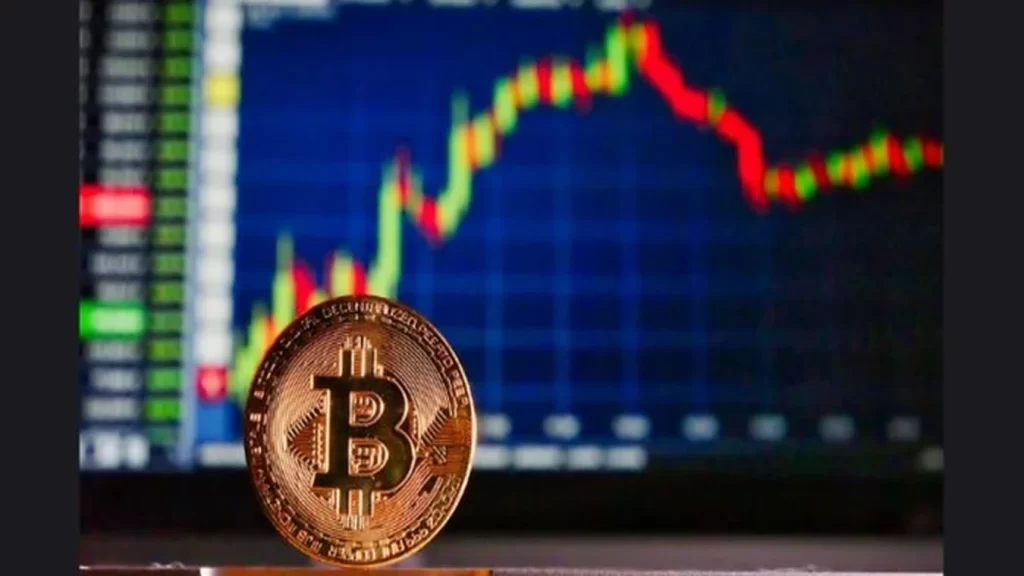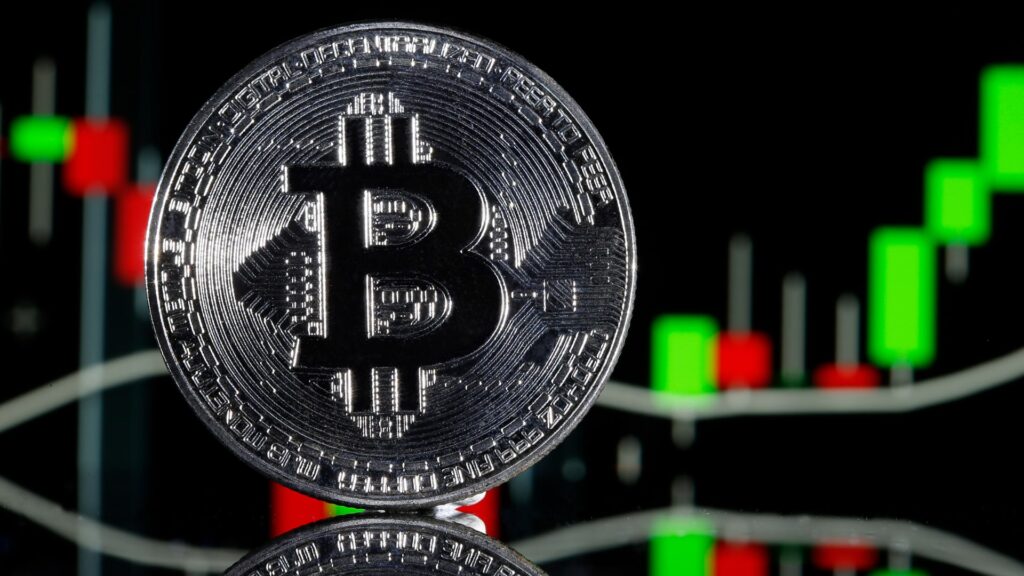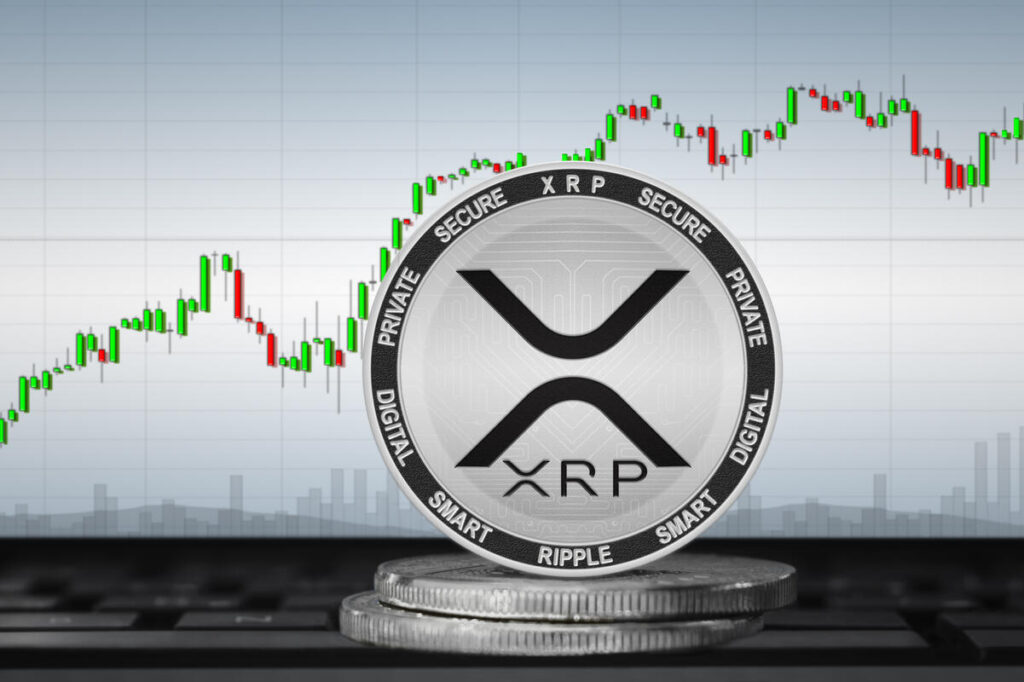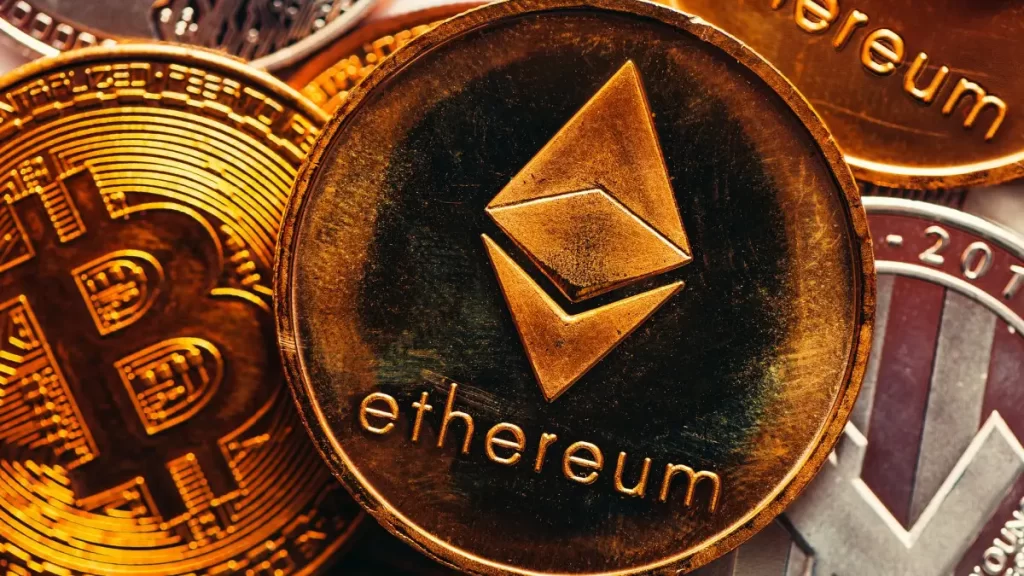While Bitcoin and ETF inflows and anticipated altcoin season are fueling market activity, the barriers to blockchain adoption remain high. To break down this barrier, CryptoEasily has officially launched its innovative mobile application, the “CryptoEasily App,” providing users with mining services for digital assets such as XRP, BTC, and ETH that require no hardware investment, energy consumption, or technical expertise. Now, every user can directly access global green energy computing power through their mobile phone, easily entering a new era of passive income.
Market Background: When Mining Meets the AI and ESG Wave
The current cryptocurrency market is showing strong momentum driven by institutional funds; however, traditional mining models still face core contradictions:
High threshold:ASIC mining rigs and graphics cards are prohibitively expensive, making them inaccessible to ordinary users.
High energy consumption: The Bitcoin network’s annual electricity consumption still exceeds that of some countries, contradicting global ESG trends.
High volatility:Increased market volatility necessitates a more stable revenue stream for users.
CryptoEasily’s AI mining solution was created for this purpose—turning every smartphone into an entry point to a global green computing network, allowing mining to return to its inclusive nature.
Platform core advantages
Zero barriers to entry
No need to buy mining rigs or pay electricity bills; simply download the app to start earning crypto assets.
Smart Revenue Optimization
Built-in AI algorithms analyze the network’s hashrate price and mining pool revenue in real time, automatically switching to the optimal mining strategy.
Green Mining Practices
All computing power comes from renewable energy sources such as Icelandic geothermal energy and North American wind power, which aligns with the direction of sustainable finance development.
Multi-asset allocation support
Simultaneously supports mining of cryptocurrencies such as BTC, ETH, and XRP, helping users naturally achieve distributed computing power configuration.
Automatic settlement of earnings
Daily earnings are automatically credited to the user’s account, supporting instant withdrawal or reinvestment, with complete control over fund flow.
Start your mining journey in four steps
1. Download: CryptoEasily app download.
2. Registration: Complete the quick verification and immediately receive a $15 computing power bonus.
3. Choose: Choose from beginner, standard, or stable computing power contracts based on your preferences.
4. Income:The system automatically starts mining, and the profits are visible and withdrawable daily.
Partial computing power contracts
- Newbie Plan: The contract period is 1 day, the minimum investment amount is $15, and the total profit is $15 + $0.6
- Basic Plan: The contract period is 5 days, the minimum investment amount is $500, and the total profit is $500 + $32
- Stabilization Plan: The contract period is 25 days, the minimum investment amount is $10,000, and the total profit is $10,000 + $4,000
(For more contract details, please click)
Once the contract takes effect, the system will automatically run. You can clearly view your daily earnings in your personal dashboard at any time and freely choose to withdraw or reinvest at any time to maximize the efficiency of your funds.
Technology and security architecture
With RWA tokenization and on-chain transparency receiving significant attention, CryptoEasily ensures user asset security through the following methods:
On-chain verifiable:All computing power allocation and revenue records are stored on the blockchain, ensuring complete transparency and auditability.
Asset storage:User assets are stored in multi-signature cold wallets to protect against network risks.
Compliance Operation:Strictly adhere to global regulatory frameworks such as MiCA to ensure business compliance and sustainability.
Future plans: Building a socialized mining ecosystem
With the rise of Web3 social and autonomous worlds, CryptoEasily is about to launch:
Social mining mechanism:Invite friends to permanently upgrade your computing power level
AI-automated resubmission system:Smart technology converts returns into interest-bearing assets, achieving compound growth.
Web3 Identity Integration:Supports direct login and profit withdrawal for mainstream decentralized wallets
Embracing a New Era of Inclusive Mining
In the current era of accelerated convergence between AI and blockchain, CryptoEasily has achieved a key breakthrough through technological innovation:This allows everyone to participate in building the cryptocurrency network and share in its growth without any cost. This is not just an upgrade to the mining model, but a crucial step towards a truly open and inclusive digital asset ecosystem.
Download the CryptoEasily App now and experience next-generation green mining
App Download:https://cryptoeasily.com/APP
Official website:https://cryptoeasily.com

Bitcoin’s onchain data is signaling renewed investor demand, with both institutional buyers and miners increasing their holdings despite a sluggish market backdrop following October’s $19 billion crypto crash.
Over the past week, Bitcoin’s realized capitalization — which measures the aggregate value of all coins based on their last moved price — rose by more than $8 billion to surpass $1.1 trillion.
BTC’s realized price also climbed above $110,000, indicating growing accumulation across the network.
The uptick is being driven primarily by Bitcoin exchange-traded funds (ETFs) and corporate holders such as MicroStrategy, according to Ki Young Ju, CEO of analytics platform CryptoQuant.
ETF and Institutional Momentum Slows, But Could Rebound
Ju noted on X (formerly Twitter) that “demand is now driven mostly by ETFs and MicroStrategy, both slowing buys recently. If these two channels recover, market momentum likely returns.”
He added that the slowdown in ETF inflows and corporate purchases has temporarily capped Bitcoin’s price recovery, even as onchain metrics show consistent inflows.
Miners Expand Operations Amid Hashrate Growth
Bitcoin’s rising hashrate — the measure of total computational power securing the network — also points to optimism among miners.
Ju described this trend as a “clear long-term bullish signal,” emphasizing that miner expansion indicates confidence in the cryptocurrency’s future profitability.
Major mining companies, including American Bitcoin, which has ties to the Trump family, have recently announced large-scale hardware purchases.
In August, the firm acquired 17,280 application-specific integrated circuit (ASIC) mining units worth approximately $314 million.
Analysts See Potential for $140K Bitcoin
Despite the positive onchain data, broader market sentiment remains cautious, with the crypto fear index still in “fear” territory since the early October sell-off.
However, analysts from Bitfinex believe the next catalyst could come from macroeconomic factors, including potential monetary easing by the U.S. Federal Reserve.
“Our base case sees Bitcoin rising towards $140,000, with total ETF inflows between $10 and $15 billion not being surprising,” Bitfinex analysts said.
They added that possible Fed rate cuts, combined with renewed ETF demand and typical Q4 seasonal strength, could help Bitcoin reach new all-time highs by November.
Still, risks remain tied to global trade tensions and the lingering effects of Trump’s tariff policies, they warned.
Coinbase’s Chief Policy Officer, Faryar Shirzad, has rejected accusations from U.S. Senator Chris Murphy that the exchange is part of a “corruption factory” connected to Donald Trump’s administration.
In a Thursday post on X, Murphy claimed Coinbase had contributed to political action committee (PAC) Fairshake and helped fund Trump’s 2025 inauguration, implying a link between the donations and the SEC’s decision to drop a previous enforcement action against the company.
Coinbase Pushes Back Against Accusations
Responding to the allegations, Shirzad denied any political bias or wrongdoing.
He explained that Coinbase was “proud to have supported the building of a new ballroom through the Trust for the National Mall,” emphasizing that many companies contributed to the same fund.
“Note that we’re not the general contractor, so we’re not the right target if you’re unhappy about how the project is proceeding,” Shirzad said.
He added that Fairshake was “non-partisan,” stressing that many public donations have supported inauguration events for past administrations.
Trump’s Ballroom Project and Controversy
Trump first announced plans in July to construct a 90,000-square-foot ballroom on White House grounds, estimating the cost at $200 million and assuring the project wouldn’t affect the East Wing.
However, recent photos revealed the East Wing had been demolished as part of the construction, and Trump later said costs had risen to $350 million.
Murphy’s criticism focused on what he saw as corporate favoritism — but Coinbase maintains its involvement was part of a broader civic project, not political influence.
Coinbase’s Growing Political Footprint
The ballroom funding issue isn’t the first time Coinbase’s relationships with Washington have drawn scrutiny.
In June, the company was listed among sponsors for a U.S. Army 250th anniversary parade coinciding with Trump’s birthday. Coinbase said its participation was a one-time contribution to America250, a nonpartisan initiative marking the nation’s semiquincentennial.
Coinbase CEO Brian Armstrong also recently visited lawmakers in Washington to discuss crypto regulation as the U.S. government shutdown entered its 31st day. The visit focused on advancing the “Responsible Financial Innovation Act,” aimed at providing clearer crypto market structure rules.
While the bill was expected to move forward by late October, the ongoing shutdown has stalled legislative progress, leaving Coinbase’s regulatory ambitions uncertain.
Bitcoin’s price dipped to $109,200 on Wednesday, marking a notable decline ahead of the U.S. Federal Reserve’s latest policy announcement.
The Fed confirmed a 25-basis-point interest rate cut, aligning with market expectations, but Bitcoin’s 6% slide from its Monday rally to $116,400 caught traders off guard.
Analysts attributed the drop to short-term risk aversion before Fed Chair Jerome Powell’s press conference, despite the anticipated cut.
Market Expectations vs. Reality
According to the Fed’s latest dot plot, policymakers expect three additional cuts in 2025.
Analysts at Goldman Sachs project at least two more 25-basis-point cuts by mid-2026, potentially bringing the benchmark rate down to the 3–3.25% range.
This outlook should theoretically support risk assets like Bitcoin, yet the crypto’s near-term movements diverged from expectations.
“Recent history has shown that the FOMC leads to a price drop in BTC, followed by a move up,” said analysts at Hyblock, a crypto analytics firm. “If price does dip post-FOMC and signs of bullish confluence emerge, such as bid-heavy orderbooks, it would likely present good opportunities for investors.”
Investors Eye Broader Economic Concerns
With rate cuts largely priced in, traders are now focusing on broader macroeconomic risks.
These include the rise in U.S. layoffs, the potential long-term impact of President Trump’s tariff measures, and uncertainty around whether the booming artificial intelligence sector represents a sustainable trend or a speculative bubble.
These factors could play a more significant role in shaping Bitcoin’s medium-term trajectory than Wednesday’s Fed decision itself.
End of Quantitative Tightening
One key takeaway from the FOMC’s statement was confirmation that the Fed will end its balance sheet reduction on December 1, marking the conclusion of its quantitative tightening program.
This policy shift may inject additional liquidity into markets over the coming months, potentially supporting risk assets like Bitcoin — though near-term volatility is expected to remain high.
Citigroup is reportedly preparing to become one of Wall Street’s first major banks to offer stablecoin payment services, signaling a major step toward mainstream adoption of blockchain-based financial infrastructure.
According to Bloomberg, Citi has partnered with Coinbase to expand its digital asset operations, starting with solutions to streamline fund transfers between fiat currencies and cryptocurrencies.
Debopama Sen, Citi’s head of payments, said that corporate clients increasingly seek faster, programmable, and more efficient payment options available around the clock.
“We’re exploring solutions to enable onchain stablecoin payments for our clients,” Sen said.
“Stablecoins will be another enabler in the digital payment ecosystem and it’ll help grow the space, it’ll help grow functionality for our clients.”
Stablecoins Becoming Central to Wall Street Strategy
The move comes just months after the passage of the U.S. GENIUS Act, which established a legal framework for stablecoin issuance and operations, effective in 2027.
Citi is joining other major financial institutions — including JPMorgan and Bank of America — that are developing or testing their own stablecoin-related services.
Even JPMorgan CEO Jamie Dimon, long critical of cryptocurrencies, recently confirmed that the bank “plans to be involved” in the stablecoin sector.
Citi’s Market Forecast Reflects Rapid Growth
In September, Citigroup sharply raised its projection for the stablecoin industry, forecasting a market size of up to $4 trillion by 2030 — a dramatic increase from the current valuation of around $315 billion.
The stablecoin market’s growth has been explosive, expanding from less than $5 billion in 2020 to more than $315 billion today, according to DefiLlama data.
Investor Enthusiasm Grows After Circle’s IPO
Investor interest in the sector has surged following Circle’s public listing earlier this year.
The USDC issuer’s shares jumped 167% on their debut, pushing its market capitalization to approximately $35 billion.
With regulatory clarity and growing institutional participation, Citigroup’s upcoming stablecoin payment platform could mark the beginning of a new era for global finance — one where traditional banking and blockchain technology converge.
U.S. President Donald Trump is preparing to nominate Michael Selig as the next chair of the Commodity Futures Trading Commission (CFTC), following the withdrawal of Brian Quintenz’s nomination.
Bloomberg first reported the development, citing an unnamed official within the Trump administration.
An official announcement has not yet been made.
Selig’s Crypto Background and Role at SEC
Michael Selig currently serves as chief counsel for the Securities and Exchange Commission’s (SEC) crypto task force and senior adviser to SEC Chair Paul Atkins.
He has earned a reputation as a “pro-crypto” regulator, a label welcomed by many in the digital asset community.
Selig’s potential appointment is being viewed by industry participants as a sign of continuity in Trump’s growing focus on cryptocurrency regulation.
Analysts believe that his experience bridging financial regulation and crypto innovation could help define the next phase of U.S. digital asset policy.
Nomination Shift After Quintenz Withdrawal
The CFTC nomination process has faced delays since September.
Brian Quintenz, Trump’s initial pick, withdrew his name following reported pressure from the Gemini crypto exchange co-founders, Tyler and Cameron Winklevoss.
Quintenz later confirmed he would return to the private sector, ending speculation about his role in the administration.
Trump has considered transferring greater responsibility for cryptocurrency oversight to the CFTC since early 2024.
Under his administration’s “Working Group on Digital Assets,” the CFTC and SEC are expected to share joint responsibility for regulating various types of crypto assets.
Policy Framework for Digital Assets
The Working Group’s July report recommended assigning oversight of spot crypto markets to the CFTC, recognizing most cryptocurrencies as commodities rather than securities.
In contrast, digital assets categorized as securities — such as tokenized bonds or stock-like instruments — will remain under SEC jurisdiction.
This split aims to clarify how different types of tokens are regulated and prevent overlapping mandates.
Joint SEC–CFTC Cooperation Intensifies
In September, the two agencies issued a joint statement pledging to “harmonize” their crypto regulatory frameworks.
Legal experts described the move as a major step toward reducing uncertainty and building a more cohesive approach to U.S. crypto oversight.
The CFTC also launched a “crypto sprint” in August to fast-track policy actions based on the White House Working Group’s recommendations.
These initiatives have fueled speculation that the SEC and CFTC could eventually merge into a single body.
However, SEC Chair Paul Atkins dismissed that notion, clarifying that only Congress or the U.S. president has the authority to merge the agencies.
XRP may be gearing up for a 35% price breakout as technical indicators align with new bullish momentum from Ripple’s expanding institutional strategy.
The token traded around $2.60 on Saturday after rebounding from a key support level, supported by renewed confidence from CEO Brad Garlinghouse.
XRP Holds Key Support Zone
XRP has maintained a strong base at the lower trendline of its long-term ascending triangle — a technical pattern that has historically preceded major rallies.
Earlier in 2025, similar rebounds from this support zone led to price jumps of 70–80%.
The token has climbed more than 8% from its recent low, aligning with the 50-week exponential moving average (EMA) of $2.33.
If momentum holds, XRP could rise toward the triangle’s upper boundary near $3.45 by December — a 35% upside from current levels.
However, a breakdown below support could push the token back toward June lows near $1.65.
Ripple Prime Adds Institutional Strength
Ripple strengthened its market position on Friday by acquiring Hidden Road and rebranding it as Ripple Prime, positioning the firm as the first crypto company to operate a global, multi-asset prime brokerage.
The company said: “Ripple’s foundational digital asset infrastructure across payments, crypto custody and stablecoin, as well as the use of XRP, will complement the services offered within Ripple Prime.”
CEO Brad Garlinghouse called the move “another step toward building an Internet of Value,” adding that “XRP sits at the center of everything Ripple does.”
Market Reaction and Analyst Expectations
Analysts view Ripple Prime as a major step in XRP’s institutional adoption story.
Trader Credibull Crypto said Ripple’s massive XRP holdings give it a strong incentive to drive the token’s success, since higher valuations directly benefit the company’s balance sheet.
Ripple also announced plans to buy $1 billion worth of XRP to create a new treasury fund, which will trade on Nasdaq under the “XRPN” ticker.
Another analyst, Zeiierman Trading, said XRP could surpass $3 in the short term due to the Hidden Road acquisition, noting that “the token is now positioned at the center of institutional adoption.”
With strong technical support and a growing institutional push, XRP could continue its upward trajectory as Ripple expands its global footprint.
Ether (ETH) maintained its rebound toward the $4,000 mark on Friday as bullish traders increased their bets on a breakout, supported by growing confidence in the broader crypto market.
ETH/USD was last trading near $3,940 after reaching an intraday high of $4,025, according to data from Cointelegraph Markets Pro and TradingView.
Key Resistance and Trader Optimism
Analysts say a move above $4,100 would mark a critical turning point.
“To get things going again, you’d want to break back above $4.1K, which has been the cycle high for a long time,” trader Daan Crypto Trades said.
“This is a key area to get back above to turn this recent flush into a big deviation. Possibly followed by a real breakout after.”
Market sentiment remains optimistic ahead of the release of the September Consumer Price Index (CPI), expected to show inflation at 3.1%.
While elevated inflation may raise concerns, most traders expect the Federal Reserve to continue leaning toward interest rate cuts, with odds exceeding 94% according to the CME FedWatch Tool.
Trader’s $131 Million Long Bet Draws Attention
Market watchers took note of one anonymous trader with a 100% win rate who reportedly expanded their long position to 33,270 ETH, worth around $131 million at current prices.
The trader also opened a 4x long on 80 Bitcoin, valued at $8.9 million, with an entry price of $110,900 per BTC.
“In the past two weeks, he’s already pocketed $16M in profit,” said X user Discover, adding, “Looks like he’s betting big on the next Ethereum pump.”
Large-scale Ethereum holders — or “mega whales” — have also been accumulating ETH between 10,000 and 100,000 tokens, further signaling bullish confidence in a breakout beyond $4,000.
Bullish Predictions Strengthen
Several analysts are forecasting significant upside for ETH if the $4,000 resistance level is cleared.
Master of Crypto highlighted that Ethereum’s exchange reserves recently hit their lowest level in years, suggesting a looming supply squeeze.
“More and more ETH is leaving exchanges every day. Exchange reserves just hit their lowest level in years,” he wrote. “People are holding, not selling. When this happens, prices usually explode.”
Another analyst, Crypto Zee, described Ether’s current formation as a “textbook continuation” pattern.
“Look for a steady climb through the $4,250 resistance, followed by the primary goal, the $4,750 Demand Zone,” he said.
Fellow trader Jelle maintained a long-term price target of $10,000 as long as ETH continues to hold its previous highs.
Market data from Cointelegraph also supports the bullish case, showing a potential rally toward $4,500 by the end of October, backed by positive MVRV metrics and a confirmed bull flag breakout.
Fintech giant Revolut has received a Markets in Crypto-Assets Regulation (MiCA) license from the Cyprus Securities and Exchange Commission (CySEC), paving the way for the company to offer regulated crypto services across the European Economic Area (EEA).
The license allows Revolut to operate under a unified regulatory framework, granting access to 30 European markets and strengthening its foothold in the digital asset sector.
“This authorisation enables us to deliver groundbreaking crypto products with enhanced transparency and trust for our growing customer base, while further reiterating our commitment to crypto as an asset class,” said Costas Michael, CEO of Revolut Digital Assets Europe.
Revolut Expands Crypto Ambitions
The move marks a significant step in Revolut’s expansion strategy as it prepares to launch its “Crypto 2.0” platform, designed to enhance trading, staking, and stablecoin services for users.
Revolut, which has more than 65 million customers worldwide — including 40 million in Europe — said the license would help it scale its crypto offerings under MiCA’s investor protection and compliance standards.
The fintech’s upcoming platform, Crypto 2.0, will feature access to more than 280 tokens, zero-fee staking with yields up to 22% annual percentage yield, and instant 1:1 stablecoin-to-dollar conversions without spreads.
Introducing Crypto 2.0 and Revolut X
Revolut said Crypto 2.0 would integrate seamlessly with its Visa and Mastercard crypto-enabled cards and Revolut X exchange, offering low trading fees between 0.00% and 0.09%.
The company aims to provide one of the broadest crypto experiences in Europe by combining on/off-ramping tools with transparent pricing and advanced security measures.
Revolut X, launched last year as a dedicated desktop trading platform, supports over 100 tokens and is now available in 30 EEA markets with mobile access via iOS and Android.
The company said Revolut X has already attracted more than 14 million crypto users globally, underscoring its growing dominance in digital asset services.
Looking Ahead to Crypto Derivatives
Revolut is reportedly exploring expansion into the crypto derivatives market, targeting institutional clients.
A company spokesperson confirmed in June that Revolut is strengthening its crypto division, following reports of plans to enter derivatives trading.
In May, the firm also announced a €1 billion investment in France and revealed intentions to apply for a local banking license — part of its broader European growth strategy.
World, the digital identity project founded by OpenAI CEO Sam Altman and formerly known as Worldcoin, is broadening its reach into the prediction market sector by integrating with Polymarket.
The partnership introduces Polymarket directly into the World App ecosystem, marking a major step in the company’s strategy to merge digital identity, financial tools, and decentralized applications.
World App Adds Polymarket Mini App
World announced on Tuesday that its mobile wallet, World App, which already includes World’s decentralized identity tool, World ID, has integrated the Polymarket Mini App.
“World App users can download and access the new Mini App today in countries where Polymarket’s services are permitted,” the company said in its statement.
The feature allows users to place bets on prediction markets without leaving the World App, using Circle’s USDC stablecoin and World’s native token, WLD.
However, access remains restricted in certain jurisdictions. “Eligibility for Worldcoin tokens is restricted based on geography, age and other factors,” World noted, adding that the token is not available in restricted regions, including New York state.
The company further clarified that “World Assets and World Foundation are not responsible for the availability of WLD on third-party platforms, such as centralized or decentralized exchanges.”
100 Million Mini App Downloads and Growing
The integration comes as World celebrates a significant milestone — surpassing 100 million Mini App downloads earlier this month.
World’s Mini Apps, introduced in October 2024, are web applications built directly into the World App ecosystem.
As of March 2025, the company had at least 150 Mini Apps active on its platform, with over 10 million WLD (valued at around $8.8 million) transacted.
By July, the project had reached 14 million verified human users across 160 countries, and a total user base of 30 million.
Prediction Markets Reach Record Volumes
The timing of the Polymarket integration coincides with a global surge in prediction market activity.
According to data from Dune Analytics, weekly trading volumes across prediction markets surpassed $2 billion for the first time in mid-October, setting a new record.
Polymarket led the sector, accounting for 52.3% of all trading volume, while rival platform Kalshi followed closely with $950 million, or roughly 47% of total activity.
The growth has attracted institutional attention. Earlier this month, Polymarket secured a $2 billion investment from the Intercontinental Exchange, while Kalshi raised $300 million in a round led by Sequoia Capital and Andreessen Horowitz.
As prediction markets continue to expand, World’s integration with Polymarket positions the company at the intersection of digital identity, decentralized finance, and global prediction ecosystems.

